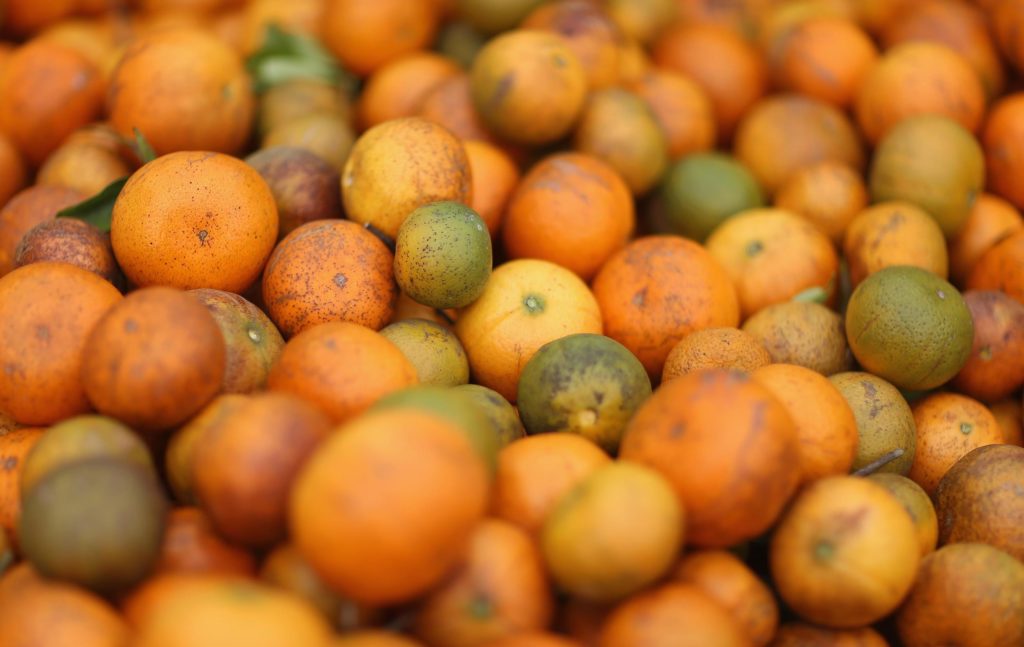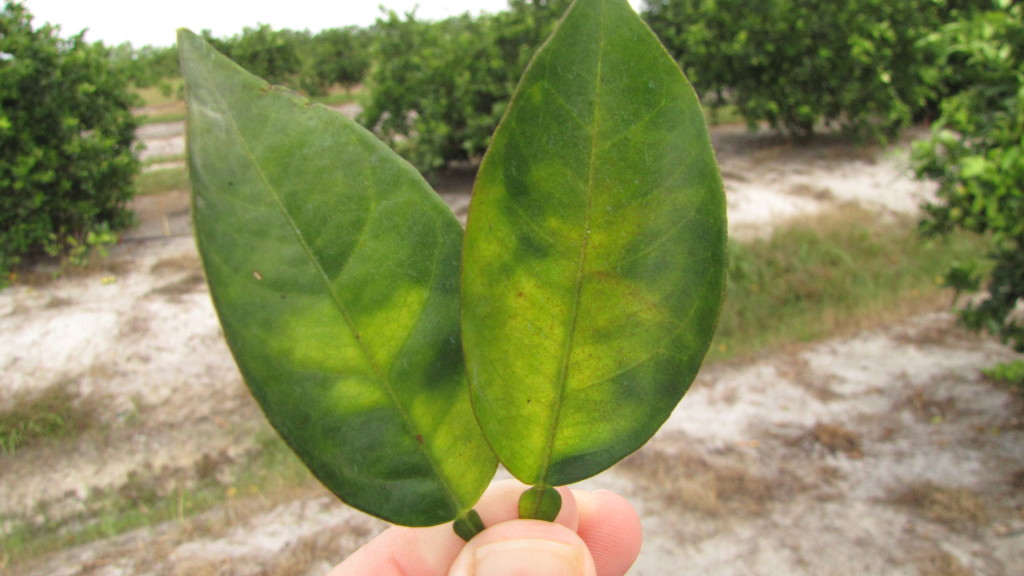Citrus greening quarantine expands to Brazoria, Galveston counties
The citrus greening quarantine has expanded to Brazoria and Galveston counties, according to Texas A&M AgriLife Extension Service experts.

Citrus greening is one of the most serious citrus plant diseases in the world. The disease poses no threat to humans or animals but has ruined millions of acres of citrus crops throughout the U.S. and abroad.
Citrus greening is a devastating bacterial disease that affects the production, quality and appearance of citrus and ornamental trees and herbal plants closely related to citrus. Also known as Huanglongbing, or yellow dragon disease, it is caused by the bacterium Candidatus Liberibacter asiaticus, which is vectored by the Asian citrus psyllid.
Adult citrus psyllids are about the size of a toothpick tip and have a distinctive 45-degree angled posture when present at rest on leaves. Nymphs in the immature stages are smaller and yellow-orange in color. They feed on new growth and secrete a waxy substance.
The citrus greening quarantine now includes more than two dozen counties located primarily in South Texas and the Coastal Bend.
Stephen Brueggerhoff, AgriLife Extension horticulture agent, Brazoria County, said the quarantine represents restrictions put into place regarding the movement of plant material and all varieties known to be impacted by the disease. It is believed the disease was discovered in a residential backyard citrus variety.
“I think the message we want to get out to the public is that everyone needs to take precautions to prevent the spread of this disease and to report the vector psyllids when found,” he said. “We want people to be able to identify the disease symptoms and the psyllid. Announcing the quarantine is part of that effort.”
There is no cure for citrus greening, but it can be eradicated if detected early, he said.
The best ways to ensure that the disease does not spread to more parts of the state are prevention and early intervention, Brueggerhoff said. No one should bring in citrus plants from states where the disease and/or Asian citrus psyllid have been detected — nor from counties in Texas that are under quarantine.
Symptoms of citrus greening
Citrus greening has a number of symptoms that can help to identify suspicious trees for further testing to confirm its presence. There is typically a blotchy mottling or random yellowing pattern on older leaves, along with areas of general leaf yellowing. Stunting and dieback become more pronounced with time, and the fruit produced are commonly small, misshapen or lopsided. Fruit and leaf drop increase as the disease progresses, usually accompanied by off-season bloom and unusual bursts of growth.
Look for symptoms in established trees inside and outside the quarantine areas and inspect citrus trees often. Report any symptoms to the Texas Department of Agriculture, TDA, at 512-463-7660. For more quarantine information, go to saveourcitrus.org.
Citrus greening quarantine in Texas
Citrus greening has devastated citrus fruit crops in Florida, causing billions of dollars in agricultural losses. It has now made its way to Texas and California and is considered the most devastating disease to citrus production worldwide.

In Texas, the disease was first detected in a commercial orange grove in Hidalgo County. In January 2012, the U.S. Department of Agriculture and TDA released information that citrus greening had been found and confirmed in Hidalgo County.
In the spring of 2014, Hidalgo and Cameron counties were both placed under a citrus greening quarantine. In July 2014, Harris County was placed under the quarantine, with Fort Bend and Montgomery counties added that fall.
In July, Texas A&M AgriLife Research was awarded more than $1.7 million in U.S. Department of Agriculture funding for two projects to combat citrus greening through multi-state, multi-institution grants in which it will collaborate with the University of California System and others.
TDA set up a webpage that provides all relevant information about the tree disease and a fact sheet that covers frequently asked questions.
William Johnson, Ph.D., AgriLife Extension horticulture agent in Galveston County, said homeowners in quarantined counties can still purchase citrus from local garden centers, but home citrus growers must ensure each plant purchased remains within the county and has a tag verifying the plant has been grown by a nursery certified to grow citrus. These certified nurseries are inspected by TDA to ensure plants grown are not infected by the citrus greening pathogen.


